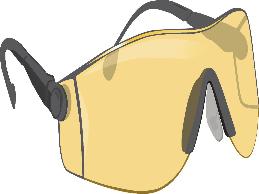On This Page
About Colorblind/Color Vision Deficiency
Color Vision Deficiency (CVD) is the inability to distinguish between some colors and shades. Most people with this condition can identify some colors. Few people are totally "color blind." Color filters, such as a special red contact lens worn on one eye or prescription glasses may be used to help some people with a color deficiency. In addition, talking products are available that will scan a color and announce a description of the color (originally designed for individuals who are blind).
Colorblind/Color Vision Deficiency and the Americans with Disabilities Act
The ADA does not contain a definitive list of medical conditions that constitute disabilities. Instead, the ADA defines a person with a disability as someone who (1) has a physical or mental impairment that substantially limits one or more "major life activities," (2) has a record of such an impairment, or (3) is regarded as having such an impairment. For more information about how to determine whether a person has a disability under the ADA, see How to Determine Whether a Person Has a Disability under the Americans with Disabilities Act Amendments Act (ADAAA).
Accommodating Employees with Colorblind/Color Vision Deficiency
People with color vision deficiency may develop some of the limitations discussed below, but seldom develop all of them. Also, the degree of limitation will vary among individuals. Be aware that not all people who have have color vision deficiency will need accommodations to perform their jobs and many others may only need a few accommodations. The following is only a sample of the possibilities available. Numerous other accommodation solutions may exist.
Questions to Consider:
- What limitations is the employee experiencing?
- How do these limitations affect the employee and the employee’s job performance?
- What specific job tasks are problematic as a result of these limitations?
- What accommodations are available to reduce or eliminate these problems? Are all possible resources being used to determine possible accommodations?
- Once accommodations are in place, would it be useful to meet with the employee to evaluate the effectiveness of the accommodations and to determine whether additional accommodations are needed?
- Do supervisory personnel and employees need training?
Key Accommodations
Distinguishing Colors: Individuals with color vision deficiency may have difficulty distinguishing various colors. This deficiency exists on a spectrum, with few people being completely unable to see color. Performing job tasks that require employees to differentiate between colors, such as decorating cakes or assembling parts, may be challenging for those with color vision deficiency.
- Labels
- Prescribed glasses for color discrimination
- Colored acetate sheets
- Assistant to identify colors such as a volunteer or co-worker
- Apps or devices to identify colors
Accommodation Ideas:
Situations and Solutions:
The following situations and solutions are real-life examples of accommodations that were made by JAN customers. Because accommodations are made on a case-by-case basis, these examples may not be effective for every workplace but give you an idea about the types of accommodations that are possible.






